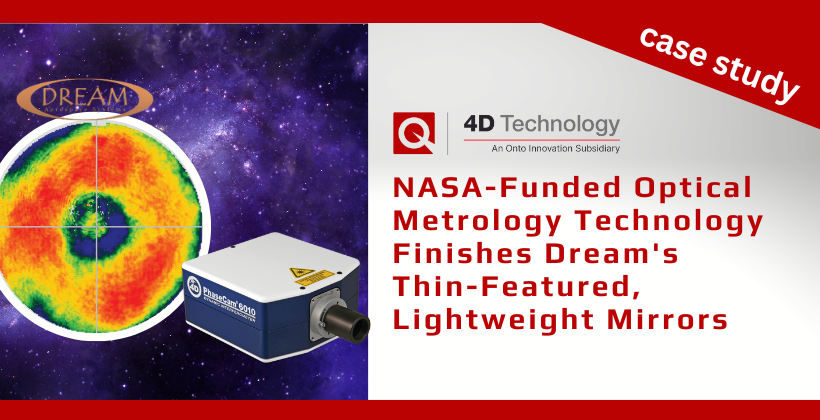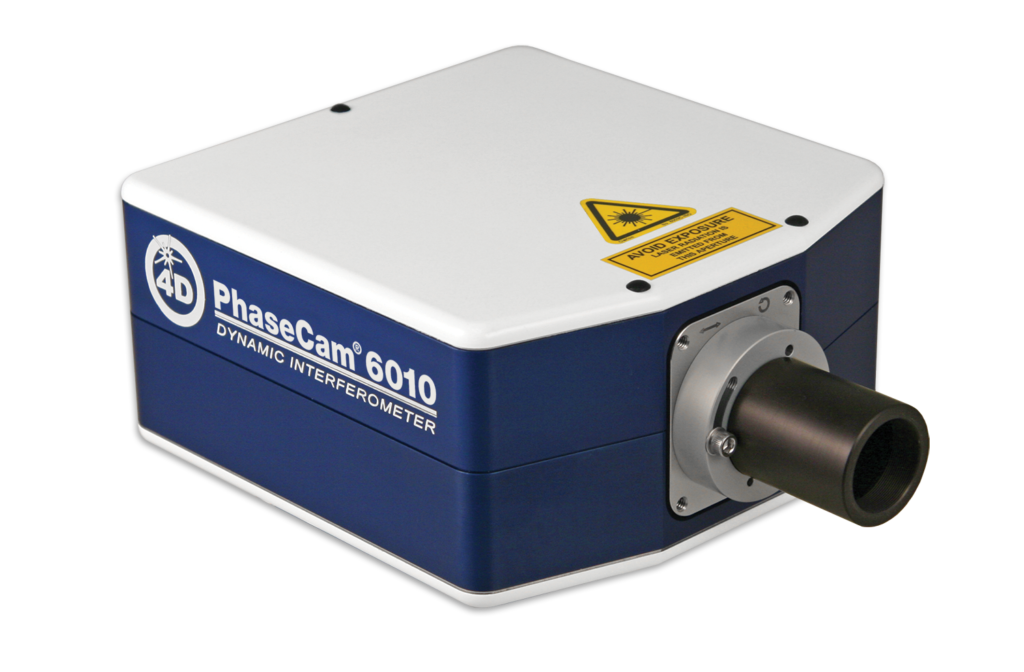
Dream Aerospace Systems: Interferometer Upgrade v7
Dream is proud to announce the upgrade of their 4D Technology interferometer. Dream uses this optical metrology technology (NASA-funded for James Webb Space Telescope) to finish Dream’s zeroDELTA™ thin-featured, lightweight mirrors.
Dream’s advanced composites offer extreme stiffness and produce an athermal instrument when combined with Dream’s zeroDELTA™ engineered, lightweight mirrors. Customers also use Dream’s CF & CFSC™ with zero-expansion mirror materials because they offer higher stiffness, lower mass and more closely match the mirror material than aluminum and steel structures. This can eliminate the need for complex flexures and metering systems, which bring their own errors to the mix. Dream’s systems achieve a much higher level of performance day after day, year after year, while having the lowest maintenance. What many have considered as performance limits due to their local atmospheric seeing, is often traditional mirror seeing and low structure stiffness; century’s old problems that Dream has addressed directly through knowledge & intelligent designs since 2003.
Video
Laser Focus World published an article detailing more about the lightweight bubble-free cast mirrors that have no ‘print-through’. Read the full article here: LFW_May2016
These thin-featured mirrors have the shortest thermal time constant and therefore the lowest installed performance loss at the boundary layer of any technology within 250-500% of Dream’s prices. When a mirror substrate is stiff and can equalise quickly, then you need a cutting edge technology like the PhaseCam to properly quantify the optical surface.
“Dream uses this in our current 5m vertical test tower, while the zeroDELTA™ lightweight mirrors are in their athermal carbon fibre mirror mounts. The test room is 68°F, +/-1°F year-round.”

dynamic phase-shifting interferometer was
looks below the astigmatism
This is needed for high stability of pitch, which gives Dream superb consistency and control over its process, allowing them to finish mirrors to the true diffraction-limit, with ~L/100-levels of MSF errors and 6-9Å (0.6-0.9nm) RMS surface roughness. All Dream optical instruments use carbon fibre extensively, in 95% of the support structures without optics. Compare that to the rest of the industry where only 5-15% of their “carbon fibre telescopes” use carbon fibre for structural purposes. Dream’s in house designed and produced carbon fibre leads the world with the highest stiffness, lowest weight and is athermal to Dream’s zeroDELTA™ lightweight mirrors.

The PhaseCam® 6010
This incredibly compact, on-axis interferometer puts vibration-immune measurement anywhere you need it
The lightweight, firer-coupled measurement head is easy to position in test stands, remote mounting locations, and other challenging setups.
This combination offers the highest installed performance (resolution & sensitivity), while requiring fewer re-coats and the interiors need cleaned at least 100x less than conventional optical systems. Dream designs from the ground up for both high installed performance and low maintenance.
“4D Technology has been the innovator in metrology for optics and precision surfaces for over 20 years. Our patented Dynamic Interferometry introduced an entire class of vibration-immune measurement systems. It’s no surprise that virtually every space- and ground-based telescope for the last two decades has been tested with 4D instruments. That same technology has enabled optics manufacturers to improve yield, reduce cycle times and ensure quality in manufacturing from high-volume flats to challenging asphere.”
4D Technology | An Onto Innovation Subsidiary
.

To talk about the 4D Technology products and how they can work for your application, contact our Technical Sales Manager, Dr. Luke Nicholls by email or call on (01372) 377882







